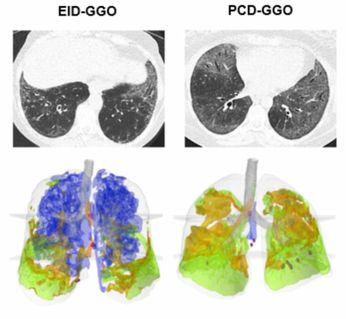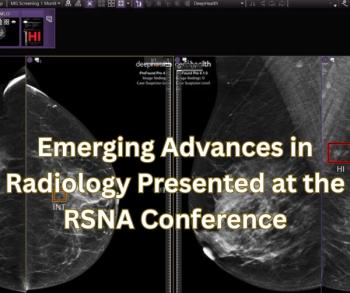Emerging MRI Research Suggests Link Between Muscle Mass, Belly Fat and Brian Aging
In MRI findings to be presented at the upcoming RSNA meeting, researchers demonstrated that the combination of higher muscle mass and lower visceral fat may have an impact on brain aging.
Reduced belly fat and higher muscle mass may be related to increased brain health, according to new magnetic resonance imaging (MRI) research to be presented at the upcoming
For the ongoing study, researchers reviewed coronal T1-weighted whole-body MRI scans for 1,164 healthy study participants (mean chronological age of 55.17) to perform quantitative assessments of total normalized muscle volume (TNMV) with respect to participant height, visceral adipose tissue (VAT) and subcutaneous adipose tissue (SAT). They also employed a fully convolutional network to assess brain age gap (BAG) — subtracting chronological age from brain age — based off T1-weighted MRI scans.
The study authors found that higher TNMV was associated with decreased chronological age and lower brain age. The researchers also determined that higher chronological age and higher brain age were linked with VAT normalized to total muscle volume.1
“What we found is the more total muscle volume an individual has, the younger they were, and the younger their brains looked. However, on the other side, the higher amount of visceral fat (with) even normalized total muscle volume was related to older looking brains and older individuals,” noted Cyrus Raji, M.D., Ph.D., an associate professor of radiology and neurology in the Department of Radiology at the Mallinckrodt Institute of Radiology at the Washington University School of Medicine in St. Louis, Mo.
(Editor’s note: For additional coverage of the RSNA conference, click
Dr. Raji said the study reaffirms obesity being a key risk factor for the development of Alzheimer’s disease and suggested that follow-up research could examine the development of glucagon-like peptide-1 (GLP-1) weight loss medications that could target visceral fat reduction.
“We can actually identify individuals who could benefit from these drugs, not just from weight loss but potentially, as our work suggests, Alzheimer's disease risk reduction and improved brain age. Future studies should look at this,” maintained Dr. Raji.
Reference
- Raji C, Meysami S, Lee S, et al. Higher muscle volume is inversely related to chronological and brain age while increased visceral to muscle fat ratio is positively related to chronological and brain age. Presentation at the Radiological Society of North America (RSNA) annual meeting, November 30-December 4, 2025, Chicago. https://www.rsna.org/annual-meeting
Newsletter
Stay at the forefront of radiology with the Diagnostic Imaging newsletter, delivering the latest news, clinical insights, and imaging advancements for today’s radiologists.





























